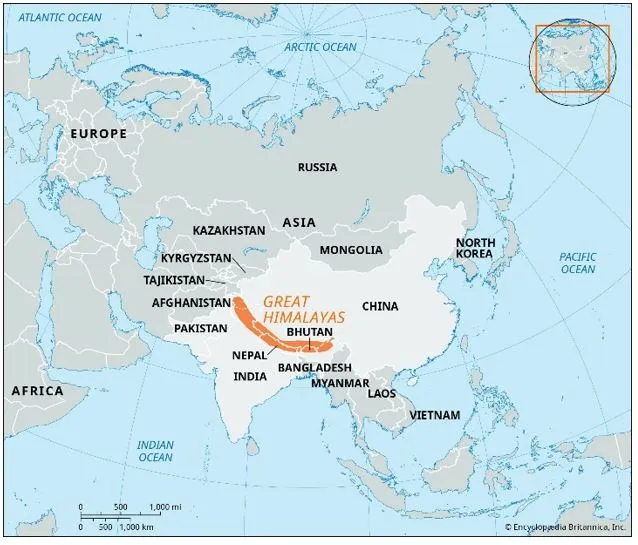

4th February 2025 (12 Topics)
Context
A recent study has uncovered concerning findings about the rapid retreat of glaciers in the eastern Himalayas, specifically in Arunachal Pradesh, over a span of 32 years.
Key Highlights
- Massive Glacier Loss: Between 1988 and 2020, 110 glaciers covering 85 sq. km were lost in the eastern Himalayas. This represents a loss of over 47% of the glacier cover in the region, with a retreat rate of 16.94 sq. km per year.
- Glacial Lake Outburst Floods (GLOFs): As glaciers shrink, they expose bedrock and create glacial lakes. These lakes are prone to glacial lake outburst floods (GLOFs), which pose a significant risk to communities and infrastructure downstream. In 2023, the region experienced a major disaster due to a GLOF in Sikkim, which claimed lives and caused damage to a hydropower project.
- Temperature and Precipitation Trends: Over the last century, the temperature in the Himalayas has risen by 6°C, with the eastern Himalayas warming at a rate higher than the global average (0.1°C to 0.8°C per decade). This warming trend is expected to continue, leading to higher temperatures and increased precipitation in the region by the end of the century.
- Impact on Freshwater Resources: The glaciers region play an essential role in maintaining the hydrological balance. The rapid retreat of these glaciers could threaten water availability for millions, especially during dry periods.
- Himalayan Glaciers' Role in Global Sea-Level: The glaciers in the Himalayas are important not only for local water supply but also in regulating global sea levels. As they melt, the freshwater flows into the oceans, contributing to rising sea levels.
Fact Box:The Himalayas:
|


